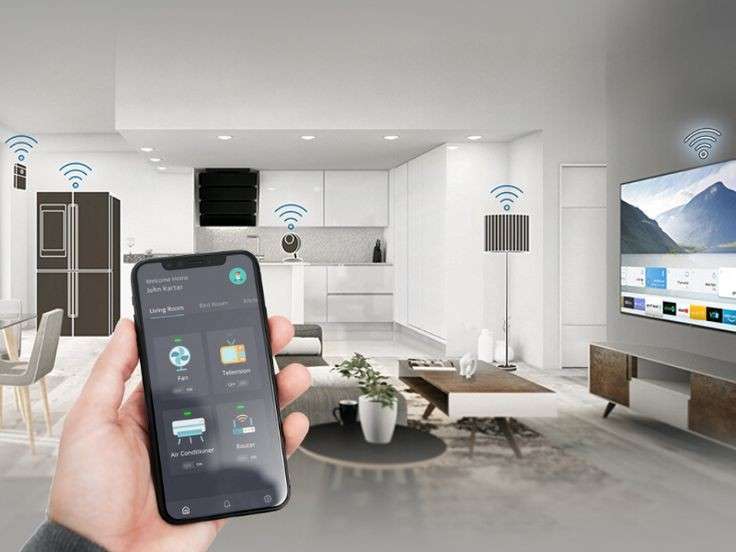Remote learning has become a staple in many students’ lives, and creating a dedicated learning space is essential to fostering focus and productivity. Whether you’re studying for school, university, or personal growth, the right environment can make a significant difference in your learning experience. Designing an effective remote learning space requires careful planning to balance comfort, functionality, and style. Here’s how you can create the ideal study area that promotes focus, organization, and success.

1. Choose a Quiet, Distraction-Free Area
The first step in creating the ideal remote learning space is selecting the right location. You need a quiet, distraction-free environment that allows you to focus. If possible, choose a room or corner that can be dedicated solely to studying.
- Separate from High-Traffic Areas: Avoid setting up your study area in spaces where there is a lot of noise or movement, such as the kitchen or living room.
- Create Boundaries: If you’re studying in a shared space, use furniture or partitions to create a sense of separation from the rest of the room. This helps signal to others that you’re in a focused environment.
Having a designated study area helps you mentally separate work from leisure, which is crucial for maintaining discipline in remote learning.
2. Invest in Comfortable, Ergonomic Furniture
Comfort is key when designing a remote learning space. Students often spend long hours sitting at their desks, so choosing ergonomic furniture is essential for maintaining good posture and preventing discomfort.
- Ergonomic Chair: Invest in a comfortable, supportive chair with good lumbar support to avoid back pain. Adjustable features will allow you to customize the chair for your needs.
- Sturdy Desk: Your desk should be large enough to hold your computer, books, notebooks, and any other materials you need. Look for a desk that promotes a tidy, organized workspace.
- Monitor Stand or Laptop Riser: If you’re using a laptop, consider a stand or riser to position the screen at eye level, reducing strain on your neck and eyes.
Creating a comfortable study space helps prevent physical discomfort, allowing you to focus for longer periods without distraction.
3. Optimize Lighting for Focus and Health
Lighting plays a crucial role in your study environment. Poor lighting can lead to eye strain, headaches, and fatigue, while good lighting enhances focus and energy. Aim for a combination of natural and artificial lighting in your remote learning space.
- Natural Light: Position your desk near a window to take advantage of natural light. Sunlight improves mood and helps regulate your circadian rhythm.
- Task Lighting: Invest in a desk lamp that provides direct light without causing glare on screens. Adjustable lighting allows you to control brightness based on the time of day and your preferences.
- Avoid Harsh Overhead Lights: Overhead fluorescent lights can cause eye strain. Opt for softer, warmer lighting to create a cozy, inviting atmosphere.
Proper lighting is essential for maintaining focus and promoting a positive, healthy learning environment.
4. Keep Your Space Organized
A cluttered workspace can lead to distractions and a lack of productivity. Keeping your study area organized is crucial for maintaining focus and mental clarity.
- Storage Solutions: Use storage bins, shelves, or filing cabinets to keep books, papers, and supplies organized. Make sure everything has a place to prevent clutter from piling up.
- Cable Management: Tidy up cords and cables using cable organizers or clips to avoid a tangled mess. This reduces distractions and keeps your desk looking neat and professional.
- Declutter Regularly: At the end of each study session, take a few minutes to clean up and put things away. A clean, organized space helps you mentally reset and stay focused during your next session.
An organized workspace reduces stress, increases productivity, and helps maintain a positive mindset.
5. Personalize Your Study Area
While functionality is important, personalizing your space can make it feel more inviting and motivating. Adding personal touches to your study area can make it a space that you genuinely enjoy spending time in.
- Add Artwork or Photos: Decorate the walls with motivational quotes, artwork, or photos that inspire you. These elements can help boost your mood and creativity.
- Incorporate Plants: Indoor plants not only add a touch of greenery to your space but also improve air quality. Low-maintenance plants like succulents or snake plants are perfect for remote learning spaces.
- Cozy Touches: Add a comfy throw blanket or a few decorative pillows to make your space feel more relaxed and comfortable.
Personalizing your study space can help create a positive and inspiring environment that keeps you motivated to learn.
6. Create Zones for Different Activities
If possible, create distinct zones for different activities within your learning space. This can help mentally separate various tasks and increase your efficiency.
- Study Zone: This is your primary work area where you focus on assignments, lectures, and reading. Keep your desk clear and organized for maximum productivity.
- Relaxation Zone: If you have the space, create a cozy corner for breaks. This could include a comfortable chair, a small bookshelf, or a space for stretching or relaxing.
- Tech Zone: If you need multiple devices or accessories (such as a tablet, headphones, or a second monitor), designate a specific area for your tech gear to keep it organized.
Having clearly defined zones helps maintain focus and prevents the workspace from feeling overwhelming or chaotic.
7. Consider Acoustics and Sound
The sound environment plays an important role in concentration. Too much noise can be distracting, while complete silence can sometimes feel isolating. Consider how you can control sound in your study area.
- Noise-Canceling Headphones: If you’re studying in a noisy environment, noise-canceling headphones can help block out distractions and improve focus.
- Background Music: Some students find that instrumental music, nature sounds, or white noise can help them concentrate. Choose a playlist or soundscape that works best for you.
- Soundproofing: If your study area is near a noisy space, consider adding soft materials like rugs, curtains, or acoustic panels to absorb sound and minimize distractions.
Managing sound in your study space can enhance focus and create a comfortable, productive environment.



